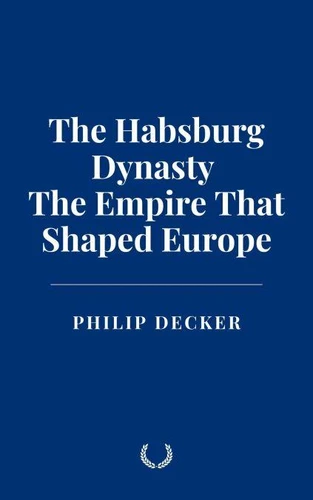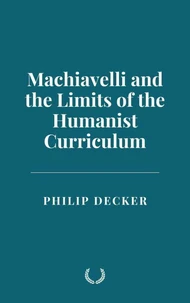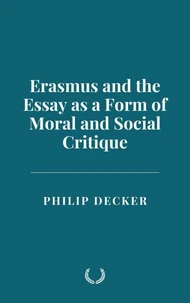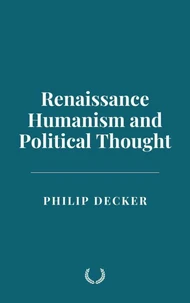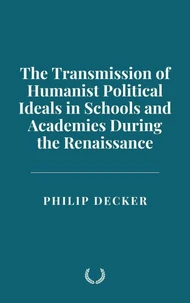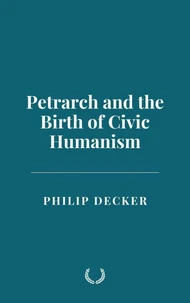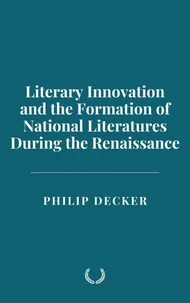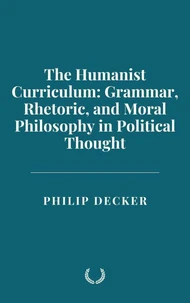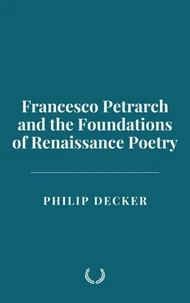The Habsburg Dynasty: The Empire That Shaped Europe
Par :Formats :
Disponible dans votre compte client Decitre ou Furet du Nord dès validation de votre commande. Le format ePub est :
- Compatible avec une lecture sur My Vivlio (smartphone, tablette, ordinateur)
- Compatible avec une lecture sur liseuses Vivlio
- Pour les liseuses autres que Vivlio, vous devez utiliser le logiciel Adobe Digital Edition. Non compatible avec la lecture sur les liseuses Kindle, Remarkable et Sony
 , qui est-ce ?
, qui est-ce ?Notre partenaire de plateforme de lecture numérique où vous retrouverez l'ensemble de vos ebooks gratuitement
Pour en savoir plus sur nos ebooks, consultez notre aide en ligne ici
- FormatePub
- ISBN8230257400
- EAN9798230257400
- Date de parution09/01/2025
- Protection num.pas de protection
- Infos supplémentairesepub
- ÉditeurIndependently Published
Résumé
This comprehensive study traces the evolution and legacy of the Habsburg dynasty, one of Europe's longest-reigning imperial houses, from its medieval origins to its collapse after the First World War. The Habsburg Monarchy not only shaped the political and cultural landscape of Central Europe but also embodied the complexities of governing a multi-ethnic, multi-lingual, and multi-religious empire.
By examining pivotal moments in Habsburg history-such as the rise of Maximilian I, the religious wars of the Reformation, the Austro-Hungarian Compromise of 1867, and the assassination of Archduke Franz Ferdinand-this work explores how the dynasty navigated the challenges of nationalism, war, and modernization. The analysis emphasizes key figures like Charles V, Maria Theresa, Franz Joseph I, and their diplomatic and military strategies, as well as internal reforms that sought to preserve imperial unity.
The narrative also addresses the role of the Habsburgs in major European conflicts, including the Thirty Years' War, the Napoleonic Wars, and the First World War, demonstrating how external pressures and internal unrest culminated in the empire's disintegration in 1918. Special attention is given to the Congress of Vienna (1814-1815) and the Revolutions of 1848, events that underscored the fragile balance between tradition and reform within the empire.
This study also explores the Habsburg legacy in the successor states that emerged after the collapse of Austria-Hungary, highlighting the persistence of imperial nostalgia, nationalist grievances, and cultural memory in post-imperial Central Europe. By engaging with primary sources such as imperial decrees, parliamentary speeches, and treaties, as well as modern historiographical debates, this work presents a nuanced interpretation of the Habsburg Monarchy as both an enduring power and a symbol of historical decline.
Ultimately, this research contributes to a broader understanding of the dynamics of empire, national identity, and governance in the modern era.
By examining pivotal moments in Habsburg history-such as the rise of Maximilian I, the religious wars of the Reformation, the Austro-Hungarian Compromise of 1867, and the assassination of Archduke Franz Ferdinand-this work explores how the dynasty navigated the challenges of nationalism, war, and modernization. The analysis emphasizes key figures like Charles V, Maria Theresa, Franz Joseph I, and their diplomatic and military strategies, as well as internal reforms that sought to preserve imperial unity.
The narrative also addresses the role of the Habsburgs in major European conflicts, including the Thirty Years' War, the Napoleonic Wars, and the First World War, demonstrating how external pressures and internal unrest culminated in the empire's disintegration in 1918. Special attention is given to the Congress of Vienna (1814-1815) and the Revolutions of 1848, events that underscored the fragile balance between tradition and reform within the empire.
This study also explores the Habsburg legacy in the successor states that emerged after the collapse of Austria-Hungary, highlighting the persistence of imperial nostalgia, nationalist grievances, and cultural memory in post-imperial Central Europe. By engaging with primary sources such as imperial decrees, parliamentary speeches, and treaties, as well as modern historiographical debates, this work presents a nuanced interpretation of the Habsburg Monarchy as both an enduring power and a symbol of historical decline.
Ultimately, this research contributes to a broader understanding of the dynamics of empire, national identity, and governance in the modern era.
This comprehensive study traces the evolution and legacy of the Habsburg dynasty, one of Europe's longest-reigning imperial houses, from its medieval origins to its collapse after the First World War. The Habsburg Monarchy not only shaped the political and cultural landscape of Central Europe but also embodied the complexities of governing a multi-ethnic, multi-lingual, and multi-religious empire.
By examining pivotal moments in Habsburg history-such as the rise of Maximilian I, the religious wars of the Reformation, the Austro-Hungarian Compromise of 1867, and the assassination of Archduke Franz Ferdinand-this work explores how the dynasty navigated the challenges of nationalism, war, and modernization. The analysis emphasizes key figures like Charles V, Maria Theresa, Franz Joseph I, and their diplomatic and military strategies, as well as internal reforms that sought to preserve imperial unity.
The narrative also addresses the role of the Habsburgs in major European conflicts, including the Thirty Years' War, the Napoleonic Wars, and the First World War, demonstrating how external pressures and internal unrest culminated in the empire's disintegration in 1918. Special attention is given to the Congress of Vienna (1814-1815) and the Revolutions of 1848, events that underscored the fragile balance between tradition and reform within the empire.
This study also explores the Habsburg legacy in the successor states that emerged after the collapse of Austria-Hungary, highlighting the persistence of imperial nostalgia, nationalist grievances, and cultural memory in post-imperial Central Europe. By engaging with primary sources such as imperial decrees, parliamentary speeches, and treaties, as well as modern historiographical debates, this work presents a nuanced interpretation of the Habsburg Monarchy as both an enduring power and a symbol of historical decline.
Ultimately, this research contributes to a broader understanding of the dynamics of empire, national identity, and governance in the modern era.
By examining pivotal moments in Habsburg history-such as the rise of Maximilian I, the religious wars of the Reformation, the Austro-Hungarian Compromise of 1867, and the assassination of Archduke Franz Ferdinand-this work explores how the dynasty navigated the challenges of nationalism, war, and modernization. The analysis emphasizes key figures like Charles V, Maria Theresa, Franz Joseph I, and their diplomatic and military strategies, as well as internal reforms that sought to preserve imperial unity.
The narrative also addresses the role of the Habsburgs in major European conflicts, including the Thirty Years' War, the Napoleonic Wars, and the First World War, demonstrating how external pressures and internal unrest culminated in the empire's disintegration in 1918. Special attention is given to the Congress of Vienna (1814-1815) and the Revolutions of 1848, events that underscored the fragile balance between tradition and reform within the empire.
This study also explores the Habsburg legacy in the successor states that emerged after the collapse of Austria-Hungary, highlighting the persistence of imperial nostalgia, nationalist grievances, and cultural memory in post-imperial Central Europe. By engaging with primary sources such as imperial decrees, parliamentary speeches, and treaties, as well as modern historiographical debates, this work presents a nuanced interpretation of the Habsburg Monarchy as both an enduring power and a symbol of historical decline.
Ultimately, this research contributes to a broader understanding of the dynamics of empire, national identity, and governance in the modern era.

